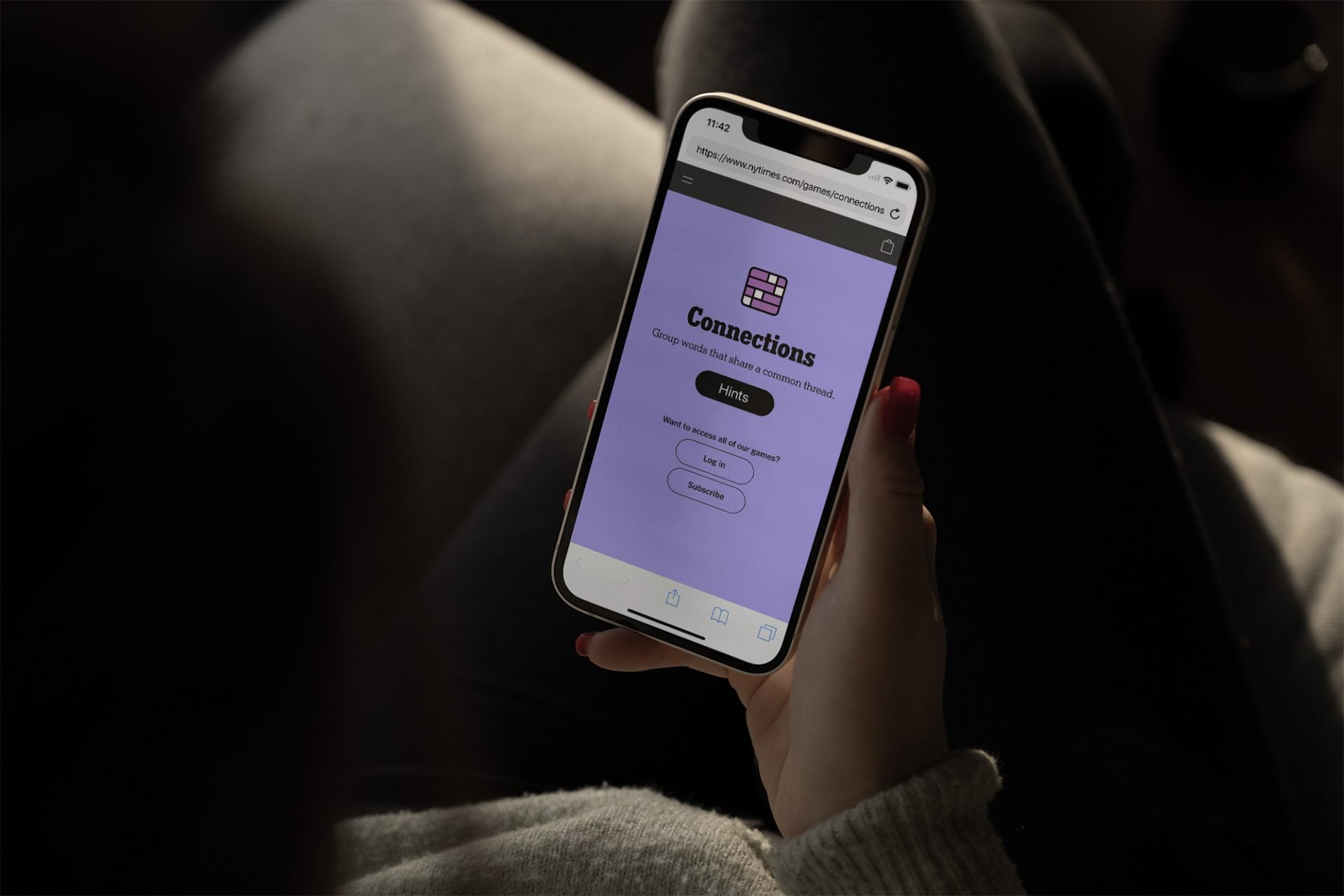The New York Times continues to captivate readers with its expanding lineup of engaging puzzles, and its latest offering, Connections, has quickly become a fan favorite.
Like Wordle and Spelling Bee, Connections is both simple and complex, challenging players to identify relationships among words in clever and unexpected ways. By grouping words into four distinct “strands” based on their associations, players put their logic and word knowledge to the test. Searching for “connections hint today” has become a daily ritual for players eager to find patterns, and for many, these hints make solving each puzzle even more enjoyable.
This article offers a comprehensive guide to mastering Connections. We’ll explore strategic tips, discuss the role of connections hints, and provide guidance on understanding the game’s unique logic. If you’re a puzzle enthusiast ready to tackle NYT Connections with confidence, read on for valuable insights that will help you sharpen your skills and enjoy this daily mental challenge to the fullest.
Understanding NYT Connections Basics
Connections is a word-association puzzle where players group words based on common themes. Each day, players are presented with a grid of 16 words and tasked with creating four strands of four words each. These strands can represent anything from straightforward categories like “fruits” or “colors” to more abstract themes like “movies from the 90s” or “words that rhyme.”
The game allows only a limited number of incorrect guesses, adding an element of pressure and excitement. The New York Times Connections page provides new puzzles daily, so if you find yourself searching for connections hints or “today’s strands answers,” you’re not alone—many players turn to hints to help solve challenging groupings.
The combination of logic, word knowledge, and intuitive thinking makes Connections a uniquely satisfying puzzle. With practice and a few strategies, you can improve your game and tackle even the toughest puzzles.
Key Strategies for Solving Connections
Whether you’re new to Connections or an experienced player, having a few strategies can help you solve puzzles faster and with fewer errors. Here are some tried-and-true tips:
1. Identify Obvious Connections First: Start by scanning the list for any words that stand out as part of an obvious category. For example, if you see terms like “apple,” “banana,” and “grape,” these words likely belong to a “fruits” strand. Starting with more accessible groupings can simplify the puzzle, allowing you to focus on trickier connections later.
2. Use Process of Elimination: After you’ve grouped the most obvious words, look closely at the remaining terms and consider possible themes. If you’ve already grouped a “fruits” strand, you can eliminate any further associations with that theme, narrowing down your options. This process of elimination can make it easier to recognize less obvious patterns among the remaining words.
3. Seek Out Connections Hints Strategically: If you’re stuck, searching for “connections hint today” can provide a nudge in the right direction without fully revealing the answers. Many online resources offer connections hints that reveal subtle clues to the day’s theme without spoiling the fun. This approach allows you to maintain the challenge while avoiding excessive frustration.
4. Spot Patterns in Word Relationships: The NYT Connections game often relies on various word patterns, such as synonyms, antonyms, or words linked by a common concept (e.g., “vehicles” or “types of fabric”). By honing in on these familiar relationships, you can improve your speed and accuracy, identifying connections that might be less obvious at first glance.
5. Use Strands Answers Sparingly: While it’s tempting to search for today’s exact strands answers, doing so too often can detract from the puzzle’s appeal. Instead, focus on using hints only when necessary, preserving the satisfaction of solving each puzzle independently. Daily puzzle hint sites offer clues and answers, but sparing use of these resources can help keep the game enjoyable.
Leveraging NYT Connections Hints Without Spoiling the Fun
While some players enjoy tackling each puzzle without assistance, others find that using hints enhances their experience. Here’s how to make the most of connections hints without undermining the game’s challenge:
• Search for Specific Strand Hints: If you’re struggling to identify just one group of words, seek hints for that specific strand rather than all the answers. Many hint pages provide targeted clues for each category, helping you zero in on just one of the four connections without revealing everything.
• Understand the Daily Themes: Sometimes, the hardest part of the puzzle is identifying the day’s overarching theme. Looking up a general connections hint can give you insight into the types of connections used without giving away the actual groupings. This can be especially helpful on days when the strands involve abstract or unfamiliar themes.
• Bookmark Reliable Resources: Sites that consistently offer subtle hints rather than outright answers can be valuable tools for improving your Connections skills. Popular puzzle pages, such as NYT Games, provide daily hints and strands answers tailored to each day’s puzzle. Bookmarking these resources can save you time and ensure you’re using high-quality hints when needed.
Using hints thoughtfully allows you to progress through challenging puzzles while maintaining the rewarding experience of solving each strand.
How NYT Connections Compares to Other NYT Puzzles
Much like Wordle and Spelling Bee, Connections combines daily engagement with a unique twist on wordplay. However, Connections differs in its emphasis on pattern recognition rather than spelling or vocabulary alone. Instead of building or guessing words, players must use associative thinking, grouping words based on less tangible relationships. This makes Connections particularly compelling for those who enjoy puzzles that combine logic and creativity.
Connections also shares a similar accessibility to Wordle, where puzzles reset each day and invite players of all experience levels. The absence of a timer means players can approach the game at their own pace, and unlike the NYT Crossword, Connections doesn’t require specialized knowledge. This accessibility is part of what makes Connections so enjoyable—it’s a game that invites everyone to play, from casual solvers to seasoned word puzzle fans.
Improving Your Puzzle Skills Over Time
The more you play Connections, the better you’ll get at recognizing themes and patterns. Here are some habits to build if you want to master the game:
• Practice Daily for Pattern Recognition: Daily practice helps familiarize you with common strand themes and patterns. Over time, you’ll recognize certain connections faster, such as grouping items by color, era, or genre.
• Reflect on Completed Puzzles: Reviewing previous puzzles and identifying why certain groupings worked can improve your skills. When you encounter similar words in future puzzles, you’ll be better equipped to make connections faster.
• Join Puzzle Communities: The Connections community shares tips, hints, and experiences, making it a valuable resource for new players. Puzzle enthusiasts often discuss different strategies on forums or social media, offering a collaborative approach to improving puzzle-solving skills.
• Use Hints and Answers to Learn Themes: On days when the puzzle feels particularly challenging, hints can help you learn about new themes. For example, if a strand involves rare terms or specific cultural references, taking note of these connections can improve your ability to recognize similar themes in the future.
Why Connections Has Become a Must-Play Puzzle
The New York Times has a talent for creating games that combine accessibility, daily challenge, and lasting appeal. Connections is no exception, offering a game that feels fresh yet familiar. Its unique word-association focus stands out among other NYT puzzles, attracting both word lovers and logic fans alike. The ability to search for “connections hint today” or find specific strands answers only adds to the communal aspect of the game, allowing players to seek help and share tips without losing the core challenge.
This game has become a staple for many, just like Wordle and Spelling Bee, building a loyal following that eagerly returns each day for a new mental challenge. The satisfaction of identifying each strand, coupled with the ease of daily accessibility, has cemented Connections as a must-play for puzzle enthusiasts. Whether you’re a casual solver or a dedicated puzzle fan, Connections offers a fresh challenge every day, inviting you to uncover patterns, make connections, and sharpen your mind—one strand at a time.

















